Commercial Growers Share 20 Lovely Lavender Types They Swear By


Elizabeth is a Permaculture Garden Designer, Sustainability Consultant and Professional Writer, working as an advocate for positive change. She graduated from the University of St. Andrews with an MA in English and Philosophy and obtained a Diploma in Applied Permaculture Design from the Permaculture Association.
Reviewed By COLIN SKELLY

Colin is a Horticulturist and Horticultural Consultant with experience in a range of practical and managerial roles across heritage, commercial and public horticulture. He holds the Royal Horticultural Society’s Master of Horticulture award and has a particular interest in horticultural ecology and naturalistic planting for habitat and climate resilience.
Contributions From CHARLIE BYRD

An Arable Farmer based in the Cotswold district. In 1999, Charlie began growing his own lavender and, more than 20 years later, is now the Owner of Cotswold Lavender, home to over 70 acres of lavender varieties.

Owners of The Lavender Fields, the Butler family have been growing lavender commercially for nearly 25 years. Nick and Lyndsay are based in Hampshire and have invaluable experience in all aspects of lavender growing.
IN THIS GUIDE
- Expert Chosen Varieties
- 1) L. angustifolia ‘Beechwood Blue’
- 2) L. angustifolia ‘Hidcote’
- 3) L. angustifolia ‘Imperial Gem’
- 4) Lavandula angustifolia ‘Batlad’
- 5) Lavandula angustifolia ‘Clarmo’
- 6) L. angustifolia ‘Miss Katherine’
- 7) Lavandula angustifolia ‘Scholmis’
- 8) L. angustifolia ‘Nana Alba’
- 9) L. x chaytoriae ‘Richard Gray’
- 10) L. x chaytoriae ‘Sawyers’
- 11) L. dentata var. dentata ‘Royal Crown’
- 12) L. ‘Goodwin Creek Grey’
- 13) L. x intermedia ‘Alba’
- 14) L. x intermedia ‘Hidcote Giant’
- 15) L. x intermedia ‘Sussex’
- 16) L. pedunculata subsp. pedunculata
- 17) L. ‘Ballerina’
- 18) L. stoechas ‘Pretty Polly’
- 19) L. ‘Willow Vale’
- 20) L. stoechas subsp. stoechas f. rosea ‘Kew Red’
LAVENDER GUIDES
Companion Plants
Cuttings
French Lavender
Harvesting
Lavender Hedging
Pruning
Varieties
Winter
A favourite with many gardeners, it’s easy to see why lavender, with its beautiful appearance and delightful scent, is such a popular flower and herb to grow.
However, choosing a lavender is not always as straightforward as it may at first appear, since there are a number of different types, species and cultivars to choose from.
If you are choosing a lavender shrub to grow, the first thing to understand is that some lavender is hardier and better suited to UK conditions than other lavender.
In addition to hardiness, you might also want to think about other specifics, such as blooms, colour, appearance and fragrance.
Expert Chosen Varieties
We spoke with some of our lavender experts about their favourite lavenders to grow.
“‘Folgate’ is my favourite,” shares Charlie Byrd from Cotswold Lavender.
“It’s the first variety we grew and is brilliant.
“It’s easy to grow and early flowering with an upright growth habit and in the summer evenings, it almost glows.”

“With hundreds of varieties, there are so many to choose from including white, pink and, of course, purple flowering varieties,” explains Nick & Lyndsay Butler, owners of Lavender Fields.
“It is exciting when you are constantly learning and discovering new varieties every year, but there really are too many to choose from!
“We love to grow lavenders that are less common and a lot of people that visit us are amazed to find out there is more than one variety.”
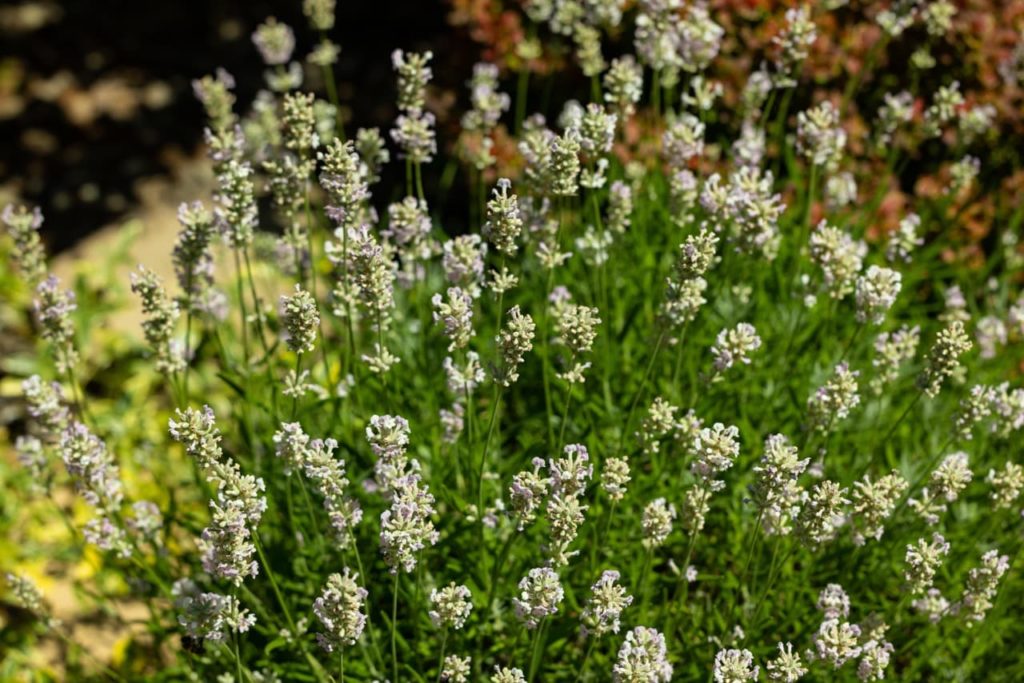
“One of our favourites is a variety called ‘Edelweiss’,” they share.
“This is an intermedia variety and is probably the most strongly scented lavender we have ever come across.
“It is white flowering and grows up to 1m.
“In terms of a purple variety, it would have to be ‘Havanna’, which is much like ‘Hidcote’ but slightly smaller.
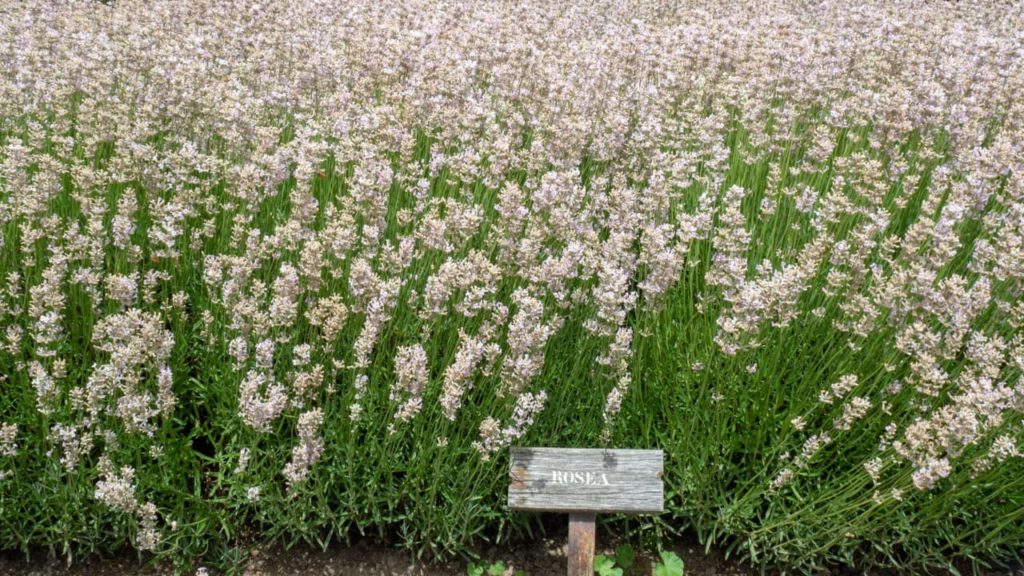
“It is possibly one of the deepest purple lavenders you will find but has a much larger flowering head than ‘Hidcote’.
“Finally, if we were to pick a pink flowering variety, it would be ‘Rosea’, which is known for providing beautiful creamy pink flowers and is something very different to the norm.”
To help you mull over your choices further, here are some of my favourite Lavender varieties to grow:
1) L. angustifolia ‘Beechwood Blue’
- COMMON NAME(S): English lavender ‘Beechwood Blue’
- HARDINESS RATING: H5
- FLOWERS: purple and blue
- FLOWERING SEASON(S): summer
This is an English lavender, and therefore H5 hardy.
Along with all the other Lavandula listed below, it will thrive in full sun, in a sheltered spot with free-draining soil.
This cultivar grows to around 45cm in height and boasts an abundance of purple-blue flowers in the summer months.
2) L. angustifolia ‘Hidcote’
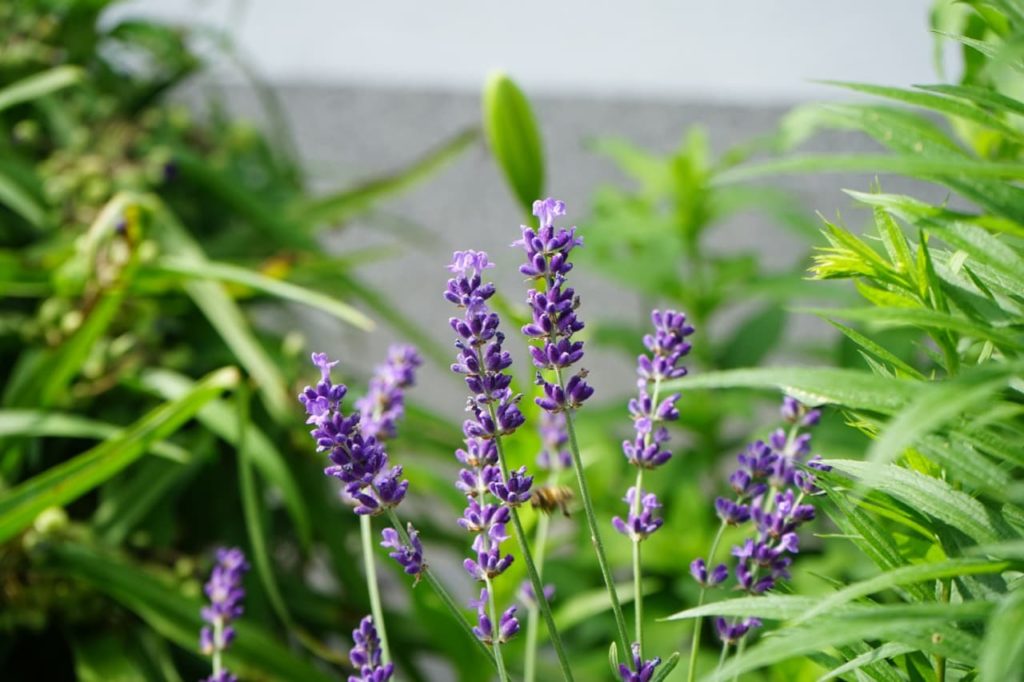
- COMMON NAME(S): English lavender ‘Hidcote’
- HARDINESS RATING: H5
- FLOWERS: purple
- FLOWERING SEASON(S): summer
‘Hidcote’ is another English lavender and it is one of the most popular varieties to grow in the UK.
This small evergreen shrub has narrow, silvery leaves and small flowers in a deep violet-purple hue that have a strong fragrance.
These are borne in spikes that grow around 3-4cm in length.
3) L. angustifolia ‘Imperial Gem’
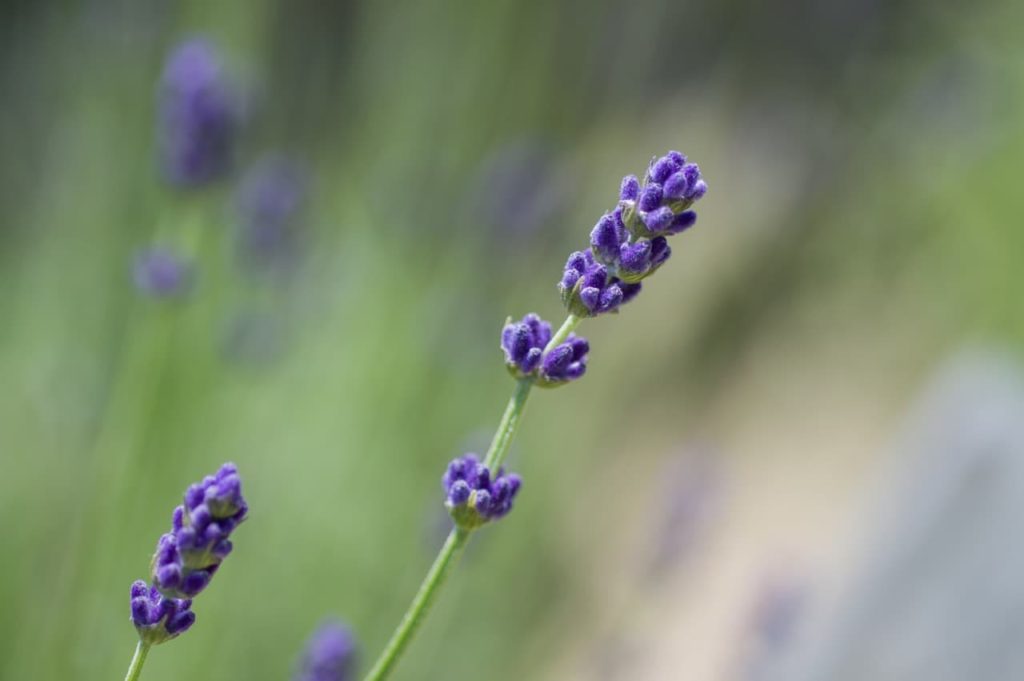
- COMMON NAME(S): English lavender ‘Imperial Gem’
- HARDINESS RATING: H5
- FLOWERS: purple
- FLOWERING SEASON(S): summer
With slightly paler purple flowers, this English lavender also bears its fragrant flowers in the summer months.
“Lavandula ‘Imperial Gem’ is one of my favourite Lavender cultivars,” shares Master Horticulturist Colin Skelly.
“It is compact and its stems are in good proportion to its overall size, making it perfect for edging paths.:
Like the above options, it is H5 hardy, so can survive winter in many a garden in the British Isles.
4) Lavandula angustifolia ‘Batlad’
- COMMON NAME(S): English lavender [Little Lady]
- HARDINESS RATING: H5
- FLOWERS: purple and blue
- FLOWERING SEASON(S): summer
This lovely English lavender bears pale to mid-lilac-coloured flowers each summer.
Bushy and compact, as you would expect an English lavender to be, it also likes full sun and a sheltered spot and, as with all of the above, it is H5 hardy.
5) Lavandula angustifolia ‘Clarmo’
- COMMON NAME(S): English lavender [Little Lottie]
- HARDINESS RATING: H5
- FLOWERS: pink
- FLOWERING SEASON(S): summer
A dwarf lavender which will grow no taller than around 30cm high, this option has pinkish-purple flowers above its greenish-grey foliage.
Since it is compact in size, this can be a good choice for pots, for the front of a border, or for orderly low hedging.
Again, this is an English lavender which is H5 hardy.
6) L. angustifolia ‘Miss Katherine’
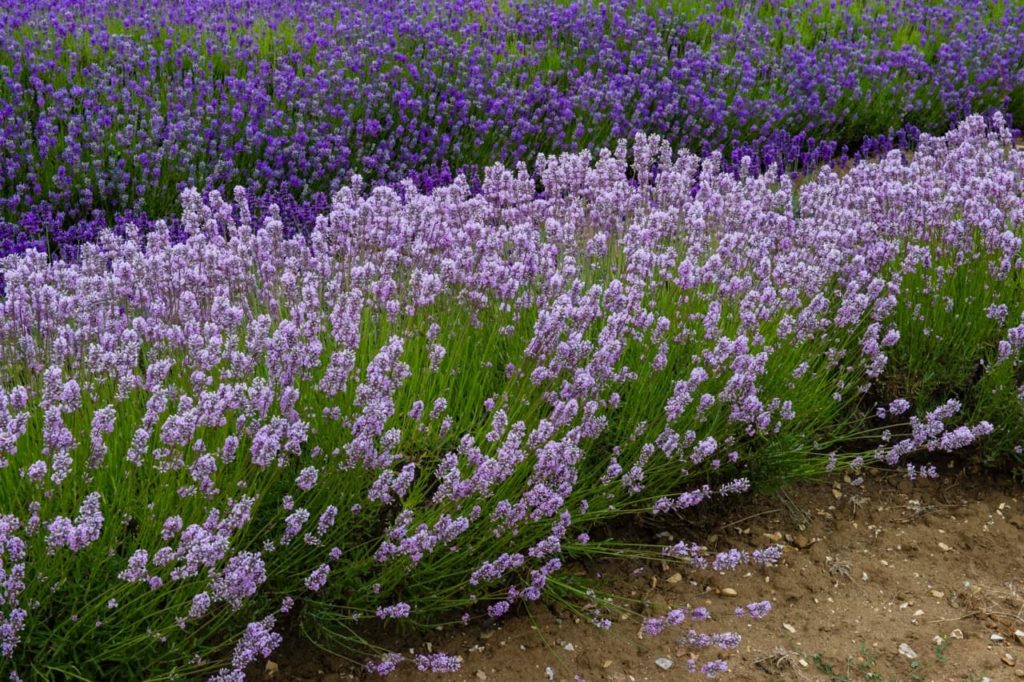
- COMMON NAME(S): English lavender ‘Miss Katherine’
- HARDINESS RATING: H5
- FLOWERS: pink
- FLOWERING SEASON(S): summer
A taller lavender growing to around 75cm tall, this option has flowers that are fragrant, with a light pink hue that sets them apart from many of the blue and purple options on this list.
Again, this English lavender is H5 hardy and needs a sheltered spot in full sun with well-drained soil.
7) Lavandula angustifolia ‘Scholmis’
- COMMON NAME(S): English lavender [Miss Muffet]
- HARDINESS RATING: H5
- FLOWERS: blue
- FLOWERING SEASON(S): summer
This is another compact dwarf lavender that is well suited to use at the front of a bed or border, in low hedging, bed edging or in pots.
It will tend to grow to around 30cm tall, bearing its violet-purple flowers in the mid and late summer.
This lavender is also H5 hardy.
8) L. angustifolia ‘Nana Alba’
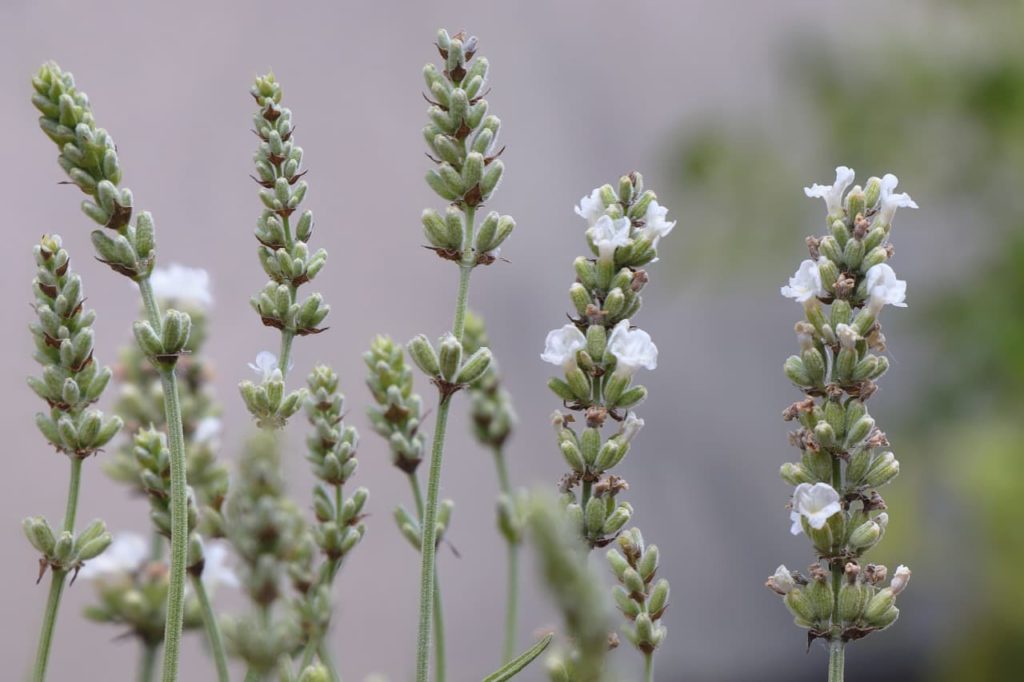
- COMMON NAME(S): dwarf white English lavender
- HARDINESS RATING: H5
- FLOWERS: white
- FLOWERING SEASON(S): summer
A lavender variety that stands out for the colour of the blooms, this cultivar of English lavender has pure white flowers.
This is another compact variety that will typically grow to a height of only around 30cm.
The white flowers look great above the narrow greyish-green leaves when they bloom in the late summer.
Again, this lavender is a hardy option.
9) L. x chaytoriae ‘Richard Gray’

- COMMON NAME(S): lavender ‘Richard Gray’
- HARDINESS RATING: H4
- FLOWERS: purple
- FLOWERING SEASON(S): summer
This hybrid Lavandula is a little less hardy than the English lavender varieties listed above.
However, it is still moderately hardy, with an RHS hardiness rating of H4.
It grows to around 50cm tall and has spikes of deep purple flowers.
10) L. x chaytoriae ‘Sawyers’
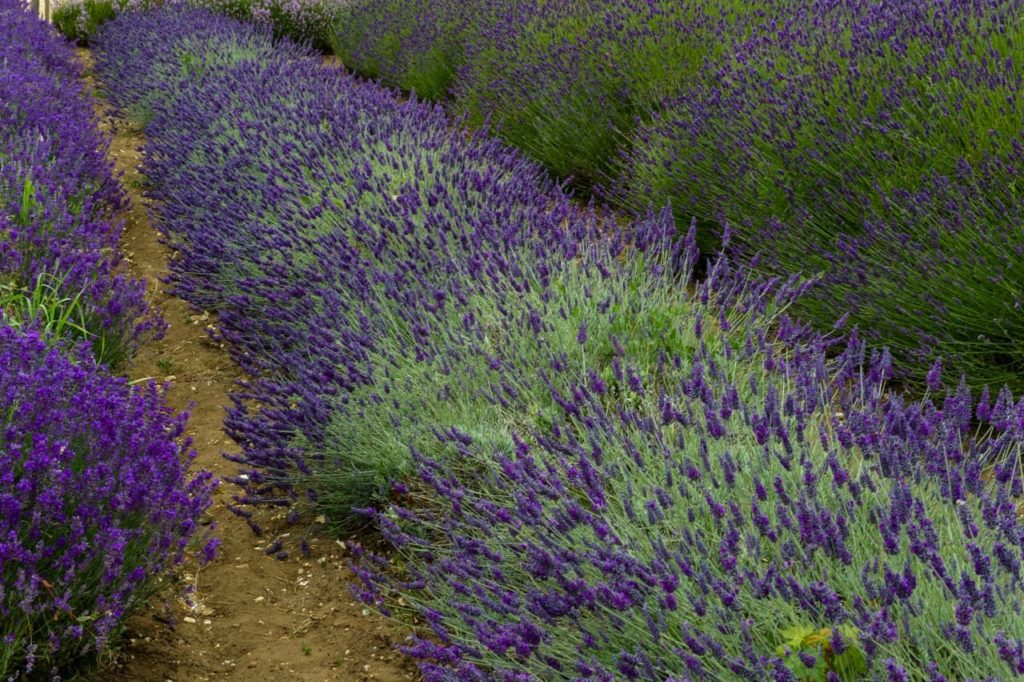
- COMMON NAME(S): lavender ‘Sawyers’
- HARDINESS RATING: H4
- FLOWERS: purple
- FLOWERING SEASON(S): summer
Another hybrid type of Lavender, this Lavandula has flowers of a slightly lighter hue than the above and grows just a little taller, with stems typically reaching around 60cm in length.
The flowers are borne in the mid-summer.
This option is also H4 hardy, meaning that, while not as hardy as English lavender types, it is still hardy enough to survive during winter across most of the UK.
11) L. dentata var. dentata ‘Royal Crown’
- COMMON NAME(S): lavender ‘Royal Crown’
- HARDINESS RATING: H3
- FLOWERS: purple
- FLOWERING SEASON(S): summer
This is what is commonly known as a French lavender.
It is more tender than any of the options mentioned thus far, with a H3 hardiness rating.
This means that, in all but the most sheltered or coastal gardens in the UK, it will require some winter protection.
However, it has great drought resistance, so could be a good option for dry, southern areas.
It will grow around 60cm tall and has small purple flowering spikes topped by larger paler purple bracts.
12) L. ‘Goodwin Creek Grey’
- COMMON NAME(S): lavender ‘Goodwin Creek Grey’
- HARDINESS RATING: H4
- FLOWERS: purple and blue
- FLOWERING SEASON(S): summer
A hybrid Lavandula, this option grows into a shrub just shy of 1m high, typically around 90cm.
It has silvery green leaves and flowering stems up to around 30cm long which are topped by spikes of dark violet-blue flowers around 10-14cm in length.
The flowers bloom in midsummer and sometimes bloom at other times too in a mild climate.
It is H4 hardy.
13) L. x intermedia ‘Alba’

- COMMON NAME(S): lavender ‘Alba’
- HARDINESS RATING: H5
- FLOWERS: white
- FLOWERING SEASON(S): summer
This is another white-flowered lavender.
It is an evergreen hybrid type that grows to 1m or more in height.
Again, the white flowers are a little different to the many shades of purple on offer and look lovely against the grey-green leaves of the plants.
Sometimes also referred to as ‘Dutch white’ this variety is H5 hardy.
14) L. x intermedia ‘Hidcote Giant’
- COMMON NAME(S): lavender ‘Hidcote Giant’
- HARDINESS RATING: H5
- FLOWERS: blue
- FLOWERING SEASON(S): summer
Also growing to around 1m tall, this Lavandula has narrow greyish-green foliage and bears long-stemmed spikes of violet-blue flowers in summer.
Again, this option is H5 hardy and is typically not a lavender that you will have to worry about too much over the winter months as long as the drainage is sufficient.
15) L. x intermedia ‘Sussex’
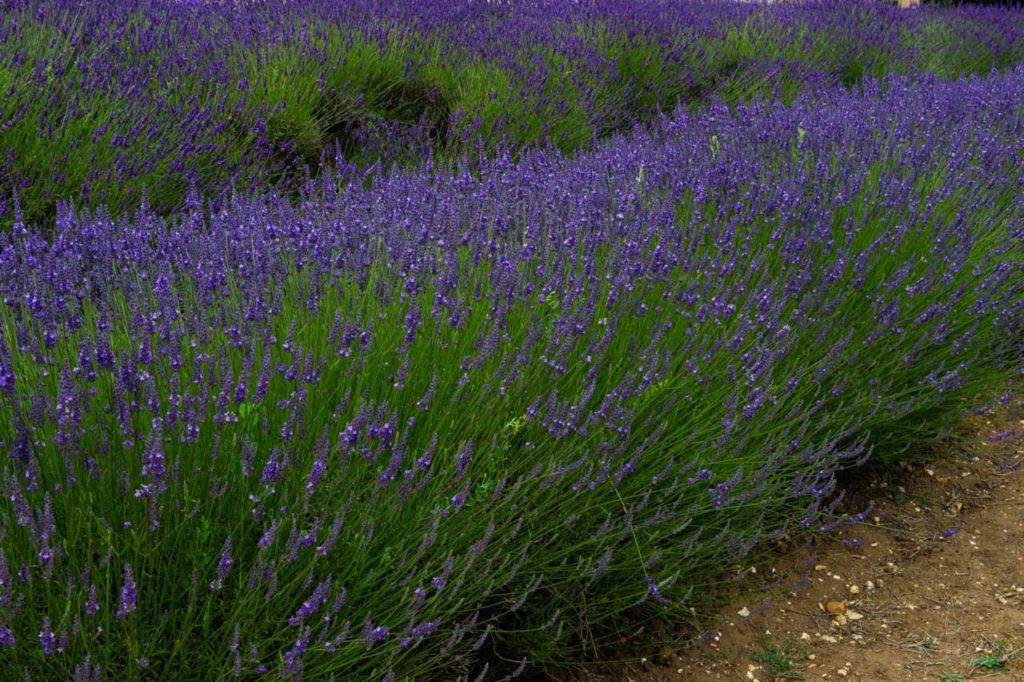
- COMMON NAME(S): lavender ‘Sussex’
- HARDINESS RATING: H5
- FLOWERS: purple
- FLOWERING SEASON(S): summer
Also sometimes called ‘Arabian Night’ this variety is another hybrid lavender.
It forms a shrub around 75cm in height and, in the mid and late summer, bears beautiful flower spikes of a dark blue-purple hue.
Again, this cultivar is H5 hardy.
16) L. pedunculata subsp. pedunculata
- COMMON NAME(S): French lavender
- HARDINESS RATING: H3
- FLOWERS: purple
- FLOWERING SEASON(S): spring / summer
This is a ‘French’ lavender that is also known as butterfly lavender to some.
It is a bushy evergreen shrub with silvery green leaves and small violet-purple flowers in oval-shaped heads with large purple bracts at the top of each head.
Note that this is a more tender type, which will need some winter protection in all but the mildest and most sheltered of southern and coastal gardens.
It is H3 hardy.
17) L. ‘Ballerina’
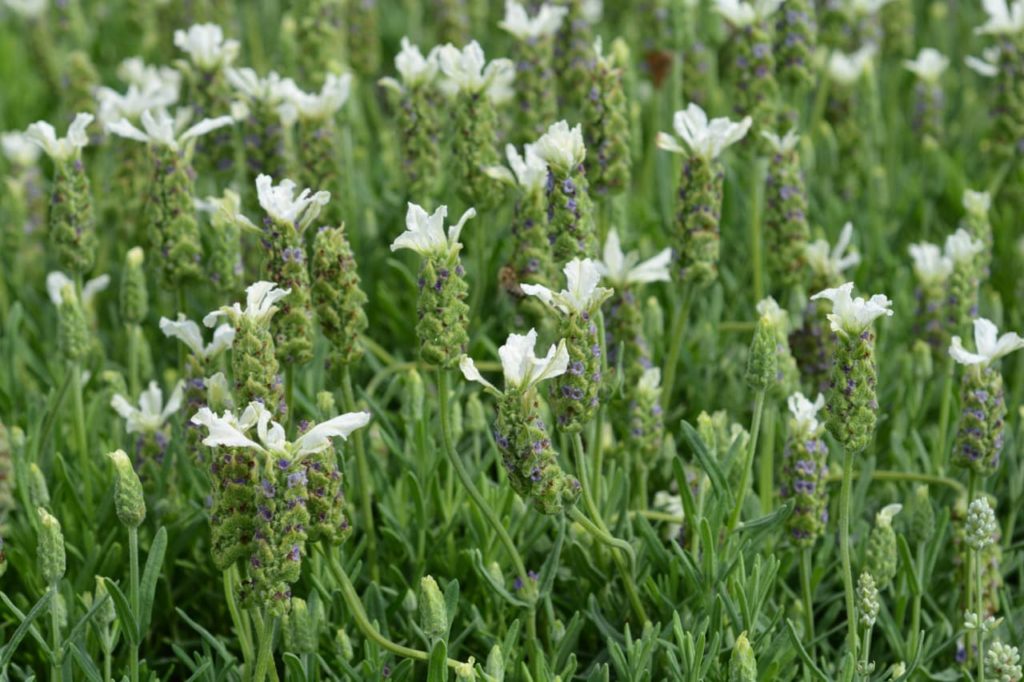
- COMMON NAME(S): lavender ‘Ballerina’
- HARDINESS RATING: H4
- FLOWERS: purple, white and pink
- FLOWERING SEASON(S): spring / summer / autumn
This is a hybrid French lavender that was introduced from New Zealand.
It has an upright growth habit, silvery green foliage and purple flowers borne on stems in dense spires, with conspicuous bracts at the top which are white that turn more purplish with age.
Though this is a hardy plant, it will need a sheltered spot in full sun.
When provided with the right growing conditions, it can bloom over a long period from late spring right through the summer months.
18) L. stoechas ‘Pretty Polly’
- COMMON NAME(S): Lavender ‘Pretty Polly’
- HARDINESS RATING: H4
- FLOWERS: purple and white
- FLOWERING SEASON(S): summer / autumn
This attractive French lavender grows to around 45cm tall.
It has flowers that are a deep purple and the heads, which flower between early summer and early autumn, are topped by white bracts with a green line down the middle of them.
This option is H4 hardy and, like other Lavandula stoechas, it has very good drought resistance.
19) L. ‘Willow Vale’
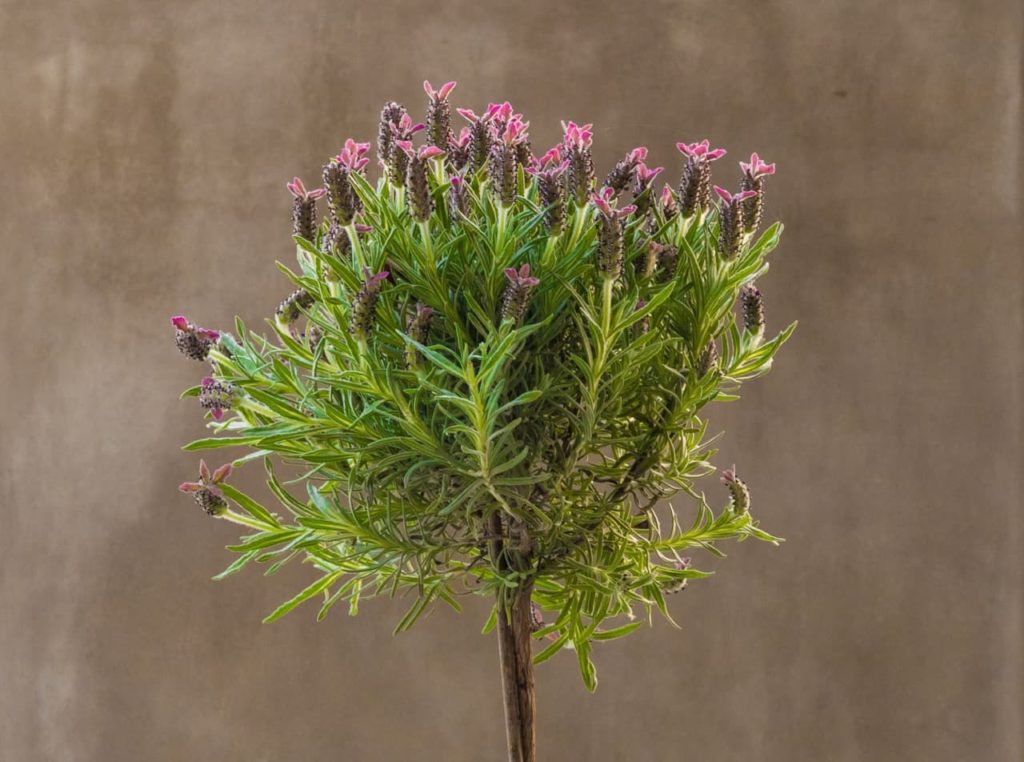
- COMMON NAME(S): French lavender ‘Willow Vale’
- HARDINESS RATING: H3
- FLOWERS: purple
- FLOWERING SEASON(S): summer
This French lavender grows to around 75cm in height.
It has yellowish-green leaves and erect stems that bear dense clusters of deep violet flowers, above which very notable reddish-purple bracts stand out.
This is an option for milder and warmer gardens and will often need protection in winter in the UK as it is only H3 hardy.
20) L. stoechas subsp. stoechas f. rosea ‘Kew Red’
- COMMON NAME(S): French lavender ‘Kew Red’
- HARDINESS RATING: H4
- FLOWERS: pink
- FLOWERING SEASON(S): spring / summer
Last but not least, this unusual French lavender variety differs from many others in the colour of its blooms and bracts.
The shrubs grow around 50cm tall and bear on them deep pink to red flowers with deep purple calyces below pale pink bracts.
This is another lavender that needs a sheltered spot out of the winds and as warm and mild a position as possible, though it is still H4 hardy.
Of course, this list by no means exhausts the number of lavenders that you could potentially grow.
You might also consider many other varieties, especially if you bring plants indoors over the winter months because, if you do, you can also consider some other more tender lavender varieties.
However, I would argue that these options are among the best for growing in UK gardens.
